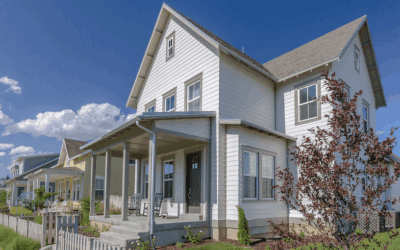A comprehensive home inspection gives homeowners and prospective buyers a detailed description of a home’s condition and what needs to be repaired. Home inspectors are third-party service providers, and they aren’t involved in selling, advertising, or repairing properties. Their fees are usually paid for by the prospective home buyer, and a detailed inspection report is required by lending institutions before mortgages are granted. A comprehensive home inspection report can be an incredibly powerful negotiating tool for buyers. A full accounting of the condition of a property can lead to seller concessions, rejections from banks, or an adjusted asking price.
What Do Inspectors Look For?
Inspections don’t look into irrigation systems, septic systems, the presence of mold, the condition of the inside of air ducts, outbuildings, and barns, or fencing. What they do look for is the condition of the roof, gutters, downspouts, and whether water pools or flows towards or away from the home. While they don’t look inside septic systems, they will do a cursory inspection for obvious leaks. The condition of sidewalks, driveways, and landscaping is noted.
Trees frequently cause problems with home inspections and insurance companies. Inspectors will look for trees infested with termites near the home, overhanging branches that could fall on the roof, branches currently touching the roof, roots growing into foundations, or other obvious problems trees cause. Detached garages are usually included in inspections, though sheds aren’t. Decks that are attached to garages or homes should have a sturdy railing, secure stairs, no wood rot, and no termite or carpenter ant damage.
One of the most important aspects of a home inspection is the roof. Errors in applying flashing are common, so those items are inspected thoroughly. They’ll look for unsealed gaps around chimneys and other pipes protruding from the roof. Loose, torn, chipped, missing, curled, or unsecured shingles are annotated. Your home inspection will look for stained soffits and fascia, whether vents are clean and operating properly, how well gutters are attached and operating, and whether the home has downspouts. They’ll even look for damage to the chimney or signs of leaks as well.
The home inspection report will include any information about damage to the foundation, like cracking or bowing that could require expensive repairs. They’ll look to see if the walls are straight and window and door frames look plumb. There shouldn’t be any wood-to-ground contact, or there should be preventative termite treatment if there is wood-to-ground contact. If damage to bricks, siding, or other exterior elements exists, it’ll be in the report. Joint caps, caulking, the type of glass used, and whether it’s thermal pane, and frames and trim of doors and windows are also included in the home inspection report.
A home inspector will go into the basement or crawlspace to look for un-insulated pipes and leaks. They’ll also open and inspect junction boxes and wires. Any knob and tube wiring will most likely need to be removed and/or replaced. The inspector will look for ventilation, problems with warm-floor and pipe heaters, and water leaks as well.
Just as important in the report is the condition of the attic. Most wiring is run in attics, and that’s also where most electrical problems happen. Again junction boxes are opened and inspected to ensure wires are properly connected using wire nuts and electrical tape. They’ll look for cracked insulation on wires or signs of arching, and they’ll trace wires back to their source in the electrical panel. The panel should provide enough amperage for the home, wires should be connected properly, and none of the breakers should be loose. Inspectors use a sharp eye to look for wet insulation and leaks that can cause considerable damage before being detected. The type of insulation used and its condition will also be noted in the report.
The home’s HVAC system should be in working condition without obvious mechanical problems. Flues shouldn’t have any open seams, and they should slope properly towards the junction with the chimney. The outside of the ductwork will be inspected to look for rust and air filters will be checked.
Bathroom exhaust fans should vent to the outdoors and not into the attic, as should vents over stoves and clothes dryers. All fixtures in sinks, showers, tubs, and utility sinks will be inspected, as will the toilets, drain pipes, garbage disposal, appliances, and water heater. Any electrical outlets in bathrooms and kitchens should be GFCI, though older homes can get away with not having these. Inspectors will look at the condition of all caulking in the home. Bedroom walls and floors, trim, door knobs, paint, outlets and light switches, air vents, and fireplaces are also important aspects of a home inspection.
A home inspection should be very thorough, and the resulting report should be comprehensive enough to list any problems that exist with the home. Lenders want to know that the mortgage they’ll grant matches the true value of the home. Buying a home is serious business, and it’s one of the most important decisions you’ll make as an adult. A home inspection report is designed to ensure that the decision you make is fully informed.
If you’re considering buying a home, a Potempa Team member is happy to help you find the perfect property to meet your needs and budget. Contact us today to get started.





